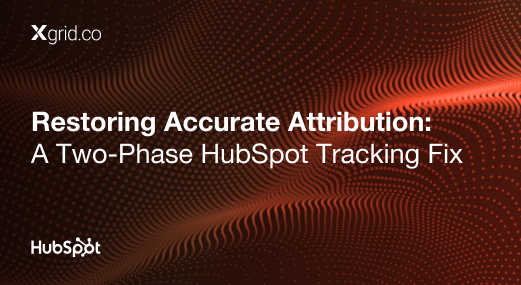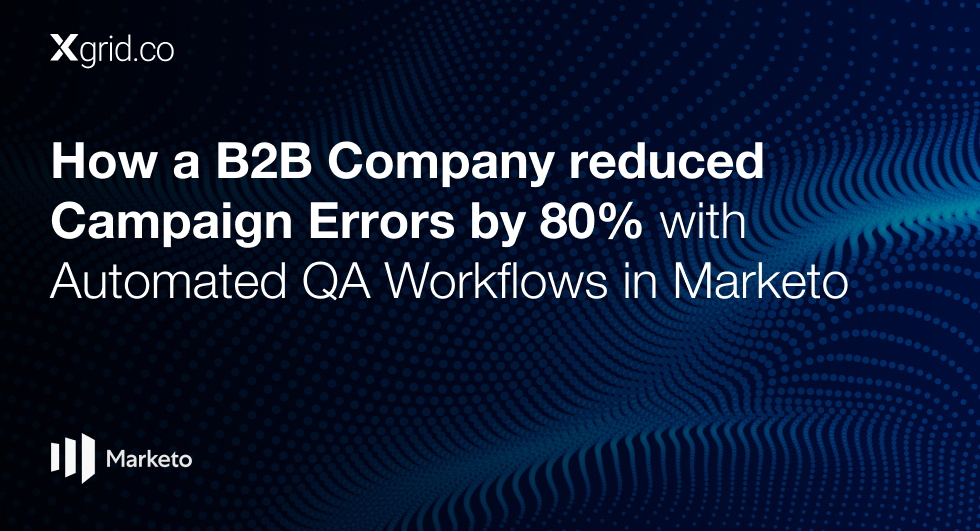Cutting False MQLs by 60%: How This B2B Team Cleaned Up HubSpot and Boosted Sales Confidence
Background: When Everyone’s an MQL, No One Is
A B2B marketing team was struggling with lead qualification bloat. Low-intent form submissions — like newsletter sign-ups or content downloads — were being flagged as Marketing Qualified Leads (MQLs), and passed to sales. The result? Wasted time, frustrated reps, and a disconnect between marketing reports and sales reality.
To make things worse, MQL statuses weren’t syncing correctly with Salesforce, and missing timestamps made it impossible to track lead funnel velocity.
The Problem: Poor MQL Logic + Broken CRM Sync
- MQL criteria were too loose — almost any form submission triggered it.
- Improper time stamping meant poor visibility into how quickly leads progressed
- Hidden form fields used to tag MQLs were inconsistent and error-prone
- MQL values weren’t syncing with Salesforce, leading to routing delays and reporting gaps
The team needed a more scalable and trustworthy way to identify real buying intent — and track it cleanly across systems.
The Solution: Centralized MQL Automation and Clean CRM Integration
Xgrid redesigned the entire MQL framework in HubSpot, tightening qualification criteria and creating global workflows that applied MQL logic automatically — without relying on hidden fields or form-specific rules.
What We Did
-
Rebuilt MQL Logic from Ground Up
- Audited all existing form types and grouped them by intent
- Limited MQL qualification to high-intent conversions like “Schedule a Call” or “Request a Demo”
- Removed low-converting touchpoints from triggering MQL status
-
Introduced Timestamping for True Lifecycle Reporting
- Created a custom MQL Date property using the DateTime field type
- Built a global HubSpot workflow to automatically apply MQL = Yes and populate the MQL Date
- Eliminated the need for hidden MQL fields on forms entirely
-
Fixed the Salesforce Sync for MQL Fields
- Mapped the new MQL status and MQL Date fields to Salesforce
- Collaborated with the Salesforce ops team to fix validation issues and improve sync timing
- Ensured sales received qualified leads in real time with reliable routing logic
-
Cleaned and Backfilled the Data
- Backfilled historical MQL Date values for existing contacts
- Removed test records from reports
- Validated sync integrity across platforms using internal test submissions
Results: A Smarter, Faster, More Reliable Funnel
- Lead quality improved significantly, cutting down false MQLs and earning back sales trust
- MQL timestamps enabled velocity reporting through the HubSpot lifecycle funnel
- Salesforce received accurate, real-time lead data for better follow-up and routing
- All forms were decoupled from MQL logic — fewer fields, fewer errors, less maintenance
Key Takeaways
- MQL logic needs to reflect real buying intent — not just engagement
- Centralized workflows outperform hidden form fields every time
- Timestamped lifecycle properties unlock powerful reporting and optimization
- Salesforce-HubSpot sync must be validated early to avoid bottlenecks downstream
Best Practices Derived
- Use Date Time fields for MQL, SQL, and Opportunity dates to report funnel velocity
- Avoid placing qualification logic inside forms — manage it through global workflows
- Work closely with Sales Ops when mapping lifecycle data to your CRM
Want to tighten your lead qualification, improve Salesforce sync, and build reliable funnel reporting? Explore our HubSpot Consulting Services to see how we can help.



